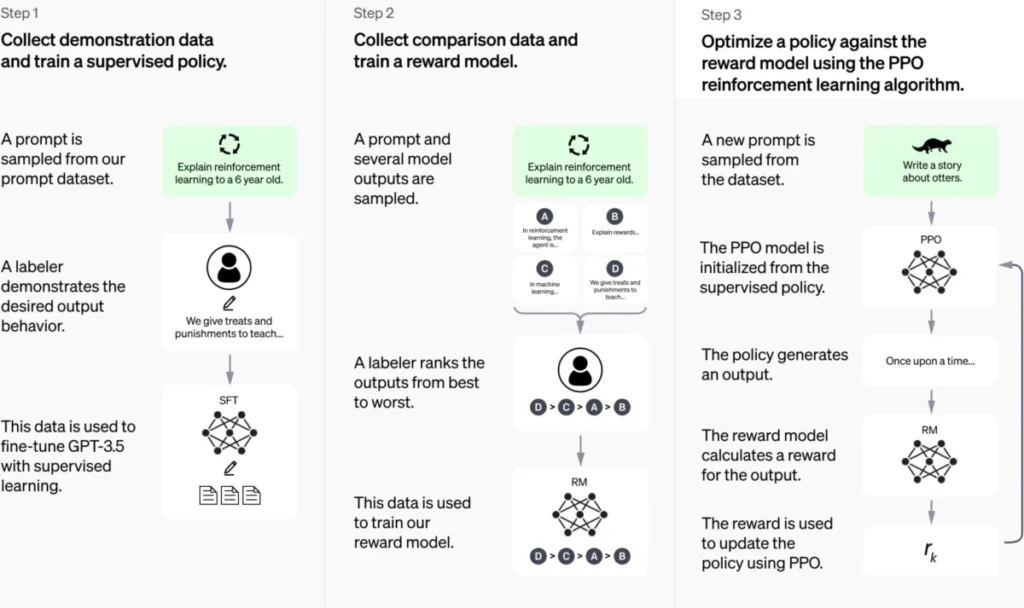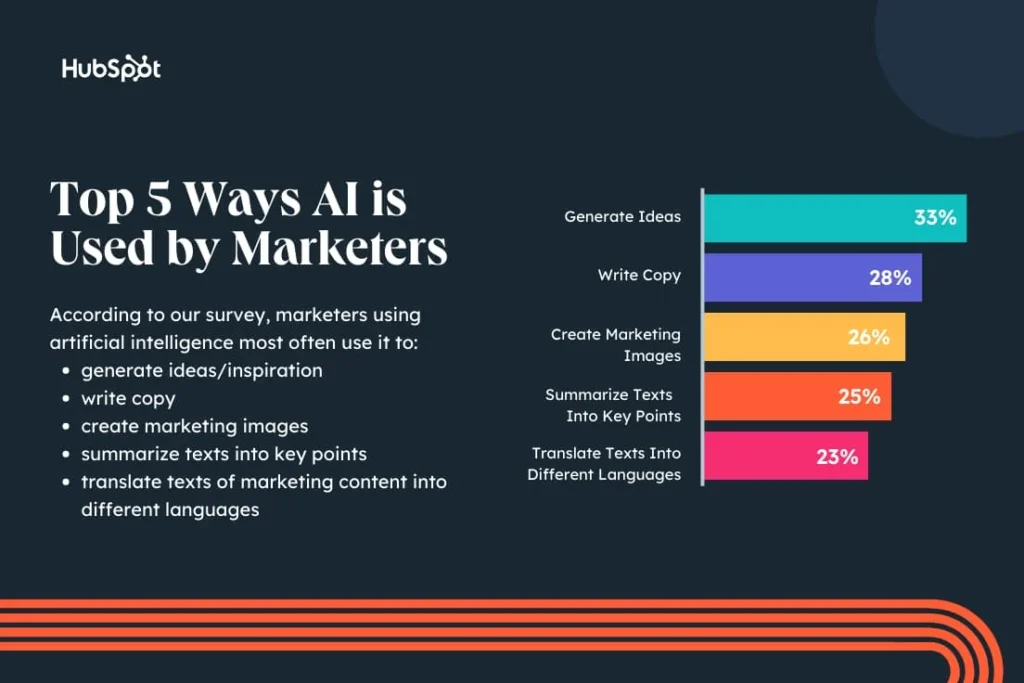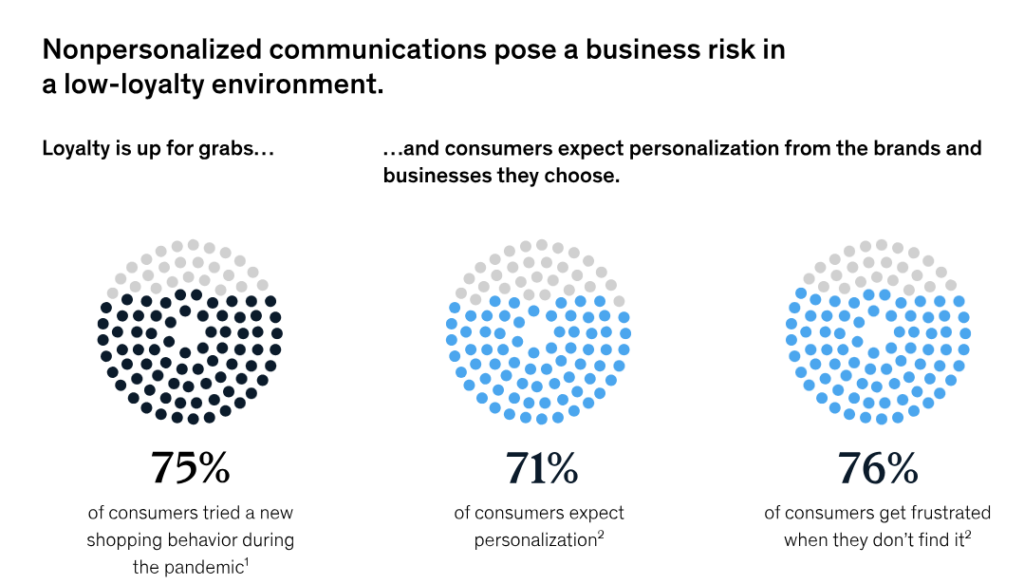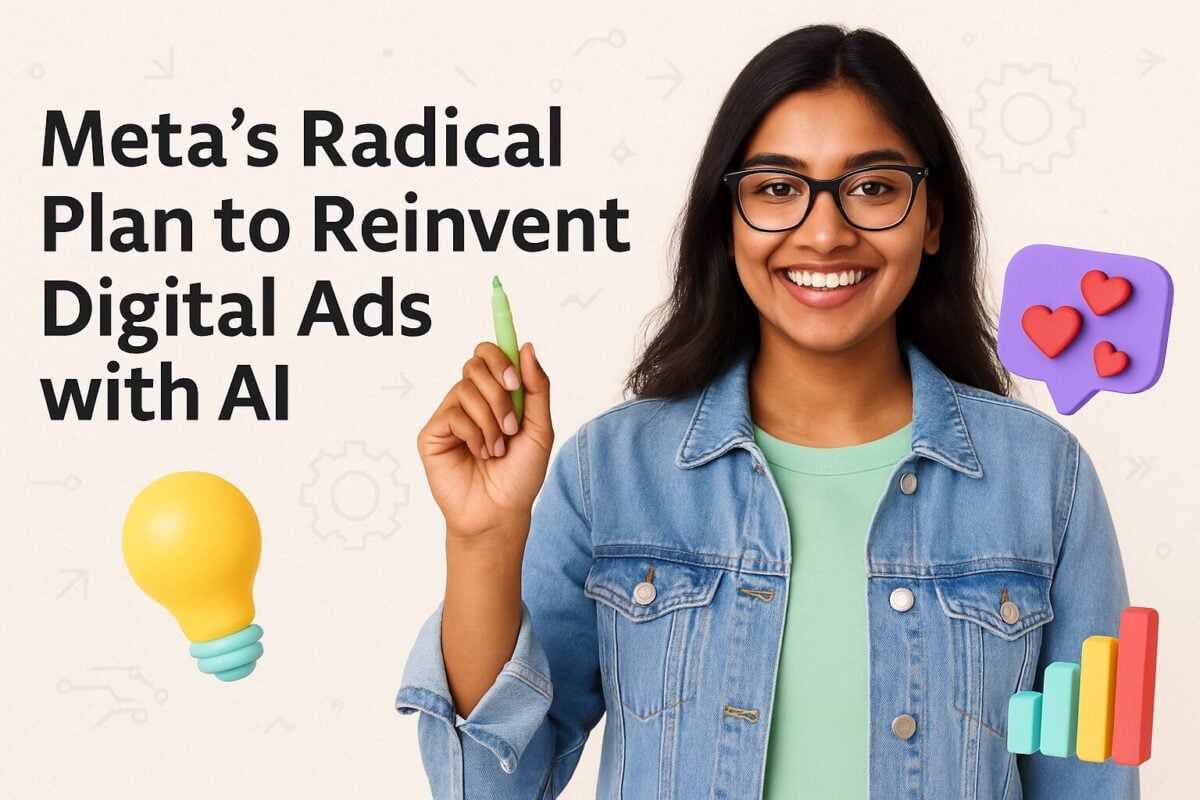OpenAI ChatGPT is all the buzz in the marketing sector these days. With many marketers claiming that it is a must-have tool for anyone in the field of digital marketing, it is worth your while to learn more about this viral AI-powered chatbot and how you can leverage it to optimize your marketing initiatives.
Since its release, OpenAI has introduced plenty of new features in ChatGPT that further enhance the capabilities of this AI chatbot. From generating content for your email copies to providing personalized responses to your customers, ChatGPT can do quite a lot for your digital marketing process.
Below, we discuss some useful ChatGPT strategies for digital marketing. We also share prompts that you can use in your conversations with ChatGPT to get the most out of this powerful tool.
What is ChatGPT?
OpenAI ChatGPT is a transformer-based language model trained to interact with users conversationally. According to itself,
''ChatGPT is built on the GPT-4 architecture, which is a deep learning model trained on a vast amount of text data from the internet to generate human-like text responses.''
What makes ChatGPT so unique is its ability to understand the context of conversations. It doesn't only understand the text but also the subtleties and nuances of human conversation.
More importantly, it can generate coherent responses in the same way a human would, making you feel like you're having a conversation with a virtual assistant.

ChatGPT working mechanism
In fact, ChatGPT supports over 50 languages, so marketers from different parts of the world can converse with it. As to its creative abilities, ChatGPT can write anything from poems and stories to articles and emails.
However, ChatGPT isn't primarily a creative writing tool, so you may not get a fully polished piece of writing. But it's more than enough to generate ideas, brainstorm, and inspire your next marketing campaign.
Best Strategies for Using OpenAI ChatGPT for Digital Marketing
While it does have its limitations, ChatGPT has powerful AI capabilities that have the potential to revolutionize digital marketing. Its applications in this sector include content creation and optimization, customer service automation, marketing personalization, customer behavior analysis, localization, report generation, customer feedback management, and market research.
Let's discuss how each of these strategies can be implemented using ChatGPT.
Create Engaging Content for Your Marketing Platforms With ChatGPT
By content creation, we don't necessarily mean simply typing and title and expecting ChatGPT to write a perfect blog post in seconds. Instead, think of it as a tool for content ideation and inspiration.
HubSpot reports that 33% of marketers use AI to generate ideas, while 28% use it for copywriting. Of the many AI tools, ChatGPT seems to be the choice for most marketers.

Top ways marketers use AI
Bethany Anderson, a public information officer, says,
''I love it because ChatGPT is a software that learns.''
She uses the tool to write press releases and social media posts because it mimics her writing style. According to her,
''ChatGPT allows me to get the writing done in a very easy, seamless way so that I can get to the bones of my job — which is outreach.''
You can do something similar for your business. Let's say you are a beauty brand that posts Instagram content regularly. You can use ChatGPT to generate captions for your images. It's like getting a second opinion or another perspective to come up with the perfect caption.
The beauty of using ChatGPT is that you can be as precise and specific as you want. For instance, this is how specific our prompt was:
Generate a caption for my Instagram post showing a vitamin C serum placed in a basket of oranges. Make the caption short and add a pun. My target audience is women aged 18 to 40.
ChatGPT surely delivered.

ChatGPT response
You can also generate longer texts. For example, we asked the tool to write an introduction for our blog post about the benefits of vitamin C serum for skin care. Here's the prompt:
Write an introduction for a blog post about the top benefits of using vitamin C serum for skin care. Keep the tone informative yet casual.

ChatGPT response
Suppose you want to create a Google Ad for your vitamin C serum product. ChatGPT can also help you come up with compelling copy for your ad. Just provide a brief description of the product and the key selling points, and let ChatGPT do its magic.
Here's what the prompt would look like:
Create a Google Ad copy for our vitamin C serum. Our product is suitable for all skin types and helps improve skin texture and reduce hyperpigmentation. It has 15% vitamin C and other natural ingredients.
Since ChatGPT is trained on data from the web, it knows that Google Ads require a headline and a description. You don't have to specify this. The response generated by ChatGPT would include both elements.

ChatGPT response for Google Ad copy generation
Similarly, you can use ChatGPT to write Facebook Ads or X posts for your skincare product. It can also write content for your product pages, create blog post outlines, write blurbs, create product descriptions, and much more.
The key is to be as specific as possible. Let ChatGPT know your target audience, the tone of the content, key selling points, and any other important details. The more specific you are, the better the results will be.
Use ChatGPT to Optimize Your Content
ChatGPT doesn't only help you create content from scratch. It can also optimize your existing content to make it more appealing and SEO-friendly. Be it meta descriptions, titles, headers, keyword-rich content, or image alt tags, ChatGPT can help you create or improve them all.
ChatGPT also helps you generate ideas for new content based on your existing content. For example, we have an article about building and growing an engaged Facebook group. We want to write more similar content.
So, we head over to ChatGPT and enter this prompt:
I have written an article titled ''How to Build and Grow an Engaged Facebook Group /Community'' for my website related to digital marketing. Suggest more similar topics to add to my topical cluster.
ChatGPT gives us a long list of articles we can write around this subject to create a content hub for Facebook group creation and management.

ChatGPT content ideas
We can go even further and ask ChatGPT to create SEO elements for these topics. Let's choose the topic: how to create engaging content for your Facebook group. We can use the following prompt to get meta description, title, and header suggestions from ChatGPT:
I am writing a blog post on ''How to Create Engaging Content for your Facebook Group / Community''. Can you suggest some meta description, title, and header ideas?
Again, ChatGPT understands the conventions and requirements of search engines. So, it remained in the optimal word count for the title and meta description.

ChatGPT title and meta description ideas
As for the header ideas, ChatGPT created an outline for our article, including subheadings and key points to cover.

ChatGPT header ideas
Let's say we also want to find the keywords and phrases that people are searching for related to this topic. We can simply enter the prompt:
What are some keywords and phrases related to ''How to Create Engaging Content for your Facebook Group / Community''?
ChatGPT provided both keywords and phrases for us to use. Of course, ChatGPT isn't as powerful as traditional SEO tools, but it can definitely help us generate ideas and get some initial data for our content.

ChatGPT keyword ideas
Conduct Customer Sentiment Analysis With ChatGPT
Another interesting way to use ChatGPT is for customer sentiment analysis. For example, if you get a negative review about your product or service, you can use ChatGPT to analyze the sentiment behind it.
You can simply provide the review as a prompt and ask ChatGPT to analyze the sentiment using a prompt such as:
I received this review for my product. Can you analyze the sentiment behind it?
ChatGPT will analyze the words and tone used in the review and provide sentiment analysis, helping you understand the emotions and feelings of your customers towards your product or service. You can do this with multiple reviews to get a better understanding of overall customer sentiment.
We used the reviews on an outdoor grill listed on Amazon as an example for this task. Going through the reviews, we noticed that quite a few users had issues with assembly. So, we used these reviews to gauge the customer sentiment regarding the assembly process.
ChatGPT was extremely detailed in its responses, showing us the overall sentiment along with the key points mentioned in each review. As a business, this could help you identify areas of improvement and address customer concerns, ultimately leading to a more positive sentiment towards your product.

ChatGPT sentiment analysis
Even better, the tool showed us a sentiment summary at the end of its analysis, giving us an overall understanding of the sentiment for that particular product.

ChatGPT sentiment summary
ChatGPT can also help you formulate a response to such reviews. Here's a simple prompt we used:
Write an appropriate reply to this review. OR How can I respond to this review in a positive manner?*
ChatGPT's response acknowledged the issue and apologized for the inconvenience. It also included a confirmation for the customer that their feedback will be taken into consideration for future improvements.

ChatGPT response
Leverage ChatGPT to Enhance PPC Campaigns
While it's not as specific as a dedicated pay-per-click (PPC) tool, ChatGPT can still provide value to your PPC campaigns.
For example, you can find the most effective keywords for SEO and PPC to reach the right audience. Then, you can use these keywords to generate effective ad copies that drive click-through rates and conversions.
Suppose we want to sell laptops to college students. It's the time around the fall semester; we want to target students who need a reliable laptop for classes and assignments.
We enter this prompt into ChatGPT:
Generate top keywords for laptops for college students for a PPC ad campaign.

ChatGPT response
For our prompt, the tool also showed us brand-specific and feature-specific keywords.

ChatGPT keyword ideas
Since ChatGPT now gives you limited access to GPT4 on the free plan, you can also upload files. For example, if you already have a keyword file that you have generated through a keyword analysis, you can upload it to ChatGPT and generate ad copies using those keywords.
We uploaded a file containing keywords about fast fashion and entered the following prompt to create ad copies for the top keywords.
Create ad copies for the top five keywords for a PPC campaign on Google Ads.

ChatGPT prompt
ChatGPT read the file and listed the top five keywords. Then, it created three headline ideas for each keyword, along with two description options. With so much data, you can easily select the most effective headline and description for your ad campaign.

ChatGPT ad copy ideas
You can use the generated ad copies as inspiration to create more variations for A/B testing or to simply save time and effort in the ad copy creation process. ChatGPT can also help with generating ideas for ad targeting options. For example, you can ask for targeting suggestions based on the demographics and interests of your target audience or even specific locations and language preferences.
Here's a prompt to generate ad targeting ideas for our laptop campaign:
Generate ad targeting ideas for a laptop PPC campaign targeting college students based on demographics and interests.
Based on the input, ChatGPT generates a list of potential targeting options such as age range, education level, purchase intent, interests, etc.

ChatGPT targeting options
It also created targeting profiles for us to use in our ad campaign. If you get more specific with your audience data, ChatGPT can provide even more personalized suggestions.

ChatGPT targeting profiles
Improve Customer Service With ChatGPT
According to Gartner's predictions, chatbots will be the primary customer service channel for about 25% of organizations by 2027. Uma Challa, the senior direct analyst in Gartner's customer service practice, said,
''Chatbots can improve customer experience and drive positive customer emotion at a lower cost than live interactions.''
ChatGPT can help in this regard. You can use it for basic customer support queries, such as responding to customer requests and messages. For example, if a customer’s order was delayed, you can ask ChatGPT to write an apology message for them.

ChatGPT output
ChatGPT can also create a knowledge base of frequently asked questions for your customers to easily access. As mentioned earlier, you can upload files and documents from which ChatGPT can learn. Simply upload your product's manuals or guides, and ChatGPT will be able to create an FAQ section and a knowledge base for your website.
OpenAI also has a GPT Store from where you can purchase pre-trained models for specific tasks like chatbots, translation, question-answering, and summarization. For example, if you search for ''customer service'' in the GPT Store, you will find models specifically trained for handling customer service tasks. This way, you won't have to spend time and resources training your chatbot from scratch.

Customer service GPTs
For example, Customer Service Pro is a GPT that helps your customer service reps in managing customer complaints and inquiries. It will give you a description of the complaint and specify the communication channel via which the inquiry was received.
Even better, it provides the response elements that you can use to formulate your reply.

Customer Service Pro GPT
Use ChatGPT for Market Research
ChatGPT can speed up market research by giving you exact answers for you to analyze. Going back to our skincare brand example, you can use ChatGPT to learn more about the current skincare trends and common skin concerns.
You can also use GPTs like Market Research and Trends Analysis to get insights into consumer behavior and preferences.

Market research GPT
For example, we used this GPT to ask ''What are the latest Korean skincare trends among women aged between 18 and 35?'' It did not only show us the trend overview but also the products that are popular in this space and the reason for this popularity.

GPT response to consumer market research
If you're a skincare store, you can use this data to determine which products you want to list on your website or stock in-store. You can also use ChatGPT to help you come up with new product ideas based on consumer preferences.
ChatGPT can also create tables now, which means market research data can be visually present for better comprehension. We asked ChatGPT to create a table of the most popular Korean skincare products among our demographic with brand and product names.

Korean skin care products table
To learn even more about these products, we asked ChatGPT to add another column to this table with the list of main ingredients in each product. As you can see, it's possible to go quite in-depth with ChatGPT's assistance in market research.

Korean skin care products with ingredients
Train ChatGPT On Your Industry and Target Audience
While this strategy may be a bit more time-consuming, it can be very beneficial in the long run. By feeding ChatGPT with data specific to your industry and target audience, you can create a customized GPT that is tailored to your needs.
For example, if you own a restaurant, you can train ChatGPT on your menu items and customer reviews. ChatGPT will then generate responses that match your brand voice and provide accurate information about your dishes.
You can also train ChatGPT on common questions or complaints from customers. For example, if many customers have complained about slow service, ChatGPT can generate responses that address this issue and suggest solutions to improve the customer experience.
Similarly, you can use the tool's market research capabilities to decide which new dishes to add to your menu by asking ChatGPT to generate ideas based on customer preferences and popular food trends.
Integrate ChatGPT With Your CRM for Personalized Customer Interactions
According to McKinsey, fast-growing organizations earn 40% more revenue from personalization compared to their slower-growing counterparts. The figure holds true as 71% of consumers expect personalization, and 76% get frustrated if they don't get it.

Importance of personalization
Thanks to ChatGPT, your customers do not need to have this complaint. You can integrate the tool with your customer relationship management software to write ad copies, marketing messages, emails, and other digital content based on customer data and behavior.
For example, Customer A may be a 50-year-old vegan who regularly orders salads. ChatGPT can generate personalized emails to promote new plant-based options. You may even use it to send a discount code for their next purchase or as a birthday treat.

ChatGPT email response
On the other hand, Customer B may be a 20-year-old meat lover who often orders burgers and fries. ChatGPT can suggest upselling options such as adding bacon to their burger or trying a new dipping sauce for their fries.

ChatGPT email response
The combination of information in your CRM and ChatGPT's language generation capabilities can create hyper-targeted and highly effective communication with your customers.
Limitations of OpenAI ChatGPT
Although ChatGPT has made significant strides in natural language processing and chatbot technology, it still falls short in a few aspects.
First, there's a limitation in the amount of context ChatGPT can retain. It can only remember information from previous exchanges to a certain extent, making it difficult to maintain a coherent conversation over a long period of time. As a result, you may get irrelevant or repetitive responses.
Secondly, ChatGPT is trained on existing text data from the internet and does not have the ability to fact-check or verify information. That's why the ChatGPT text box has a footer that reminds you that ChatGPT can make mistakes, so you should check important information.

ChatGPT text box footer
Also, due to the datasets it has been trained on, the text it generates may exhibit bias. Additionally, it lacks common sense knowledge and empathy, so it is possible to get inaccurate, irrelevant, inappropriate, or insensitive responses.
Open AI also says that the tool
''is sensitive to tweaks to the input phrasing or attempting the same prompt multiple times.''
So, the model might tell you that it doesn't know something one time, but if you rephrase or ask in a different way, it might give an answer.
If you input an ambiguous query, the ideal response for the tool would be to ask clarifying questions. But OpenAI says that
''our current models usually guess what the user intended.''
So, you should be careful while using ChatGPT for important or sensitive information.
These limitations do not make the chatbot any less useful for business use cases. By being aware of them, you’ll know what issues to look for when checking the responses or content it generates.
Conclusion
The bottom line is that ChatGPT comes with a wealth of opportunities for your marketing use cases. Anyone from any industry anywhere in the world can use it for various applications and use cases. Being free, the tool is an asset for small businesses and startups, too.
The ChatGPT strategies for digital marketing we've seen above are only some of the ways you can use this tool. There is no limit to the applications of chatbots in marketing, so you can always explore new ideas and use cases for your own business.
With time, ChatGPT will also get better and more accessible. Some new features include a GPT store, the ability to create tables and uploaded files, and support for several languages. As technology advances, we can only expect more powerful features to make digital marketing more efficient and effortless.
Sure, there are some limitations to ChatGPT, but that's where the need for human oversight comes in. These limitations indicate that you should not leave AI to its own devices yet. Zara Kerwood, the senior director of creative technology at George P. Johnson, says,
''[AI] should be the technology in the background.''
Basically, it should aid and not take over the conversation. The right blend of AI and human touch is what will truly elevate your digital marketing efforts.
Frequently Asked Questions
How does ChatGPT work?
Trained on massive datasets, ChatGPT applies deep learning algorithms to generate relevant responses to text-based inputs. Its conversational interface allows users to type statements or questions in the text box and then generate appropriate responses with a click of a button. When users key in a message, the app processes the input on its transformer architecture. It generates a response based on the patterns it learned from its training data.
What can ChatGPT be used for?
ChatGPT has a wide variety of use cases across industries. Creating content for marketing campaigns, crafting email messages, writing poems or essays, conducting preliminary research, condensing a long piece of text, categorizing items into different groups or classes, translating text to different languages, and many more are some of its uses.
How accurate is ChatGPT?
ChatGPT tends to be highly accurate in language generation and text completion. However, it is less accurate when answering questions and analyzing sentiments. Its accuracy is affected by the training data and the complexity of the task or question. Over time, we can expect the app’s accuracy to increase as it goes to continuous training in more expansive and recent datasets.
What is the OpenAI GPT Store?
The OpenAI GPT Store is an online marketplace where users can find various chatbot models trained on GPT technology. These models are pre-trained for specialized use cases, such as customer service, sales, productivity, market research, lifestyle, and programming.
How can you use ChatGPT for customer service?
ChatGPT has plenty of use cases in customer service, such as answering frequently asked questions, providing product recommendations, handling customer complaints, and offering personalized support. You can also train your own chatbot or use an existing GPT to further customize your customer service interactions.


